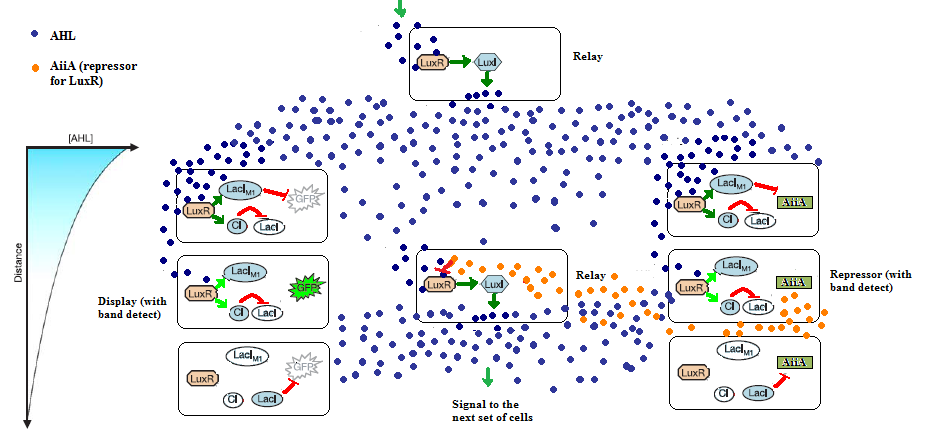Team:Uppsala-SwedenProject
From 2010.igem.org
(→Project concept:) |
m (→Commercial value of the project:) |
||
| Line 480: | Line 480: | ||
Figure 1:Schematic showing quorum sensing behaviour and responses which relate to band detect. Adapted from Basu S et.al, 2005. | Figure 1:Schematic showing quorum sensing behaviour and responses which relate to band detect. Adapted from Basu S et.al, 2005. | ||
| - | == | + | == Proof Of Concept and Characterisation: == |
| - | + | ||
| - | + | ||
| - | + | ||
| - | + | ||
| + | Under Construction | ||
== References: == | == References: == | ||
Revision as of 18:25, 15 July 2010



|
Project Description:Our project for iGEM 2010 involves building a biological rate detection sensor and demonstrating its usefulness in building a bio-clock and color display unit. The rate detection mechanism makes use of a pair of of promoters with different efficiencies to detect the quantitative value of the input signal. Figure 1:Schematic showing quorum sensing behaviour and responses which relate to band detect. Adapted from Basu S et.al, 2005. Proof Of Concept and Characterisation:Under Construction References:1.Basu S, Gerchman Y, Collins C.H, Arnold F.H, Weiss R, A synthetic multicellular system for programmed pattern formation, 2005, Nature, Vol 434, 1130-1134. 2.Danino T, Mondragón-Palomino O, Tsimring L, Hasty J, A synchronized quorum of genetic clocks, 2010, Nature, Vol 463(7279): 301-2. |
 "
"
